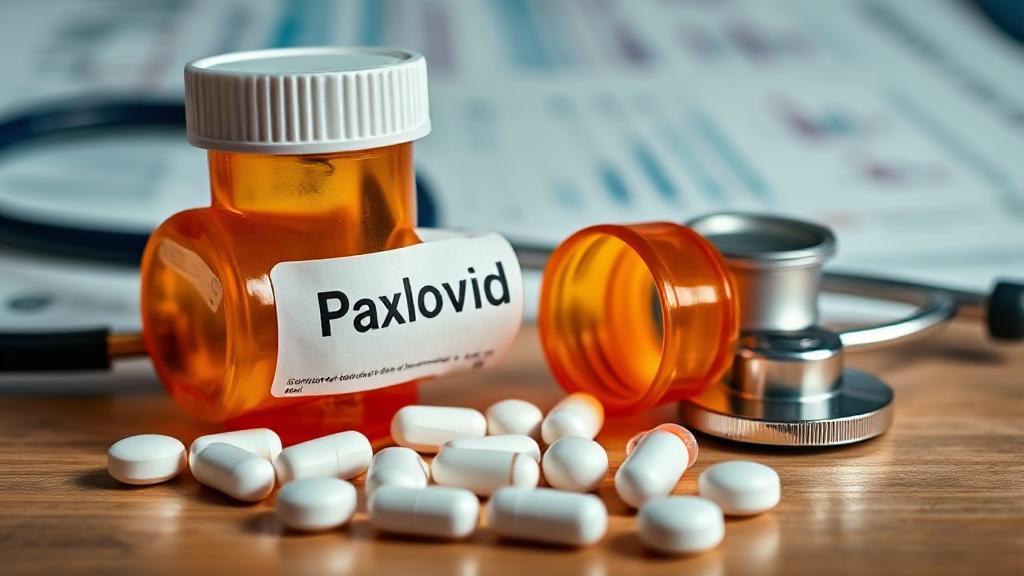Introduction
Paxlovid, a combination of nirmatrelvir and ritonavir, has emerged as a promising oral antiviral treatment for COVID-19. Developed by Pfizer, it has been authorized for emergency use in several countries, including the United States. While Paxlovid has shown efficacy in reducing the severity of COVID-19 symptoms and preventing hospitalizations, it is crucial to understand its potential side effects, especially the severe ones, to make informed decisions about its use.
How Paxlovid Works
Paxlovid works by inhibiting the protease enzyme that the SARS-CoV-2 virus needs to replicate. By blocking this enzyme, the medication helps to reduce the viral load in the body, thereby alleviating symptoms and decreasing the likelihood of severe illness. For more detailed information on how Paxlovid functions, you can refer to Pfizer's official documentation.
Common Side Effects
Most patients taking Paxlovid report mild to moderate side effects, including:
- Altered taste perception (dysgeusia)
- Diarrhea
- Increased blood pressure
- Muscle aches
- Nausea
- Abdominal pain
- Vomiting
Severe Side Effects
Liver and Kidney Complications
Patients with pre-existing liver or kidney conditions require special attention. Severe reactions may include:
- Acute kidney injury
- Elevated liver enzymes
- Hepatotoxicity
- Yellowing of the skin or eyes (jaundice)
- Dark urine
- Severe fatigue
Important Note: Patients with severe kidney disease may need dose adjustments, while those with severe liver disease may not be candidates for Paxlovid treatment.
Allergic and Hypersensitivity Reactions
Severe allergic reactions, although rare, can occur. Signs include:
- Rash
- Itching or swelling, especially of the face, tongue, or throat
- Severe dizziness
- Trouble breathing
- Fever
- Eosinophilia
Drug Interactions
One of the most significant concerns with Paxlovid is its potential interaction with other medications. According to the FDA's safety guidelines, some medications that may cause dangerous interactions include:
- Blood thinners
- Heart rhythm medications
- Cholesterol-lowering drugs (statins)
- Anti-seizure medications
- Psychiatric medications
- Some antidepressants
COVID-19 Rebound
A phenomenon known as "COVID-19 rebound" has been observed in some patients taking Paxlovid. This occurs when:
- Initial symptoms improve during treatment
- Patient tests negative for COVID-19
- Symptoms return and/or positive test results reappear within days
The CDC has issued guidance regarding this phenomenon.
High-Risk Groups
Certain populations should exercise additional caution:
Elderly Patients
- More susceptible to drug interactions
- May have reduced kidney function
- Often taking multiple medications
Immunocompromised Individuals
- Higher risk of severe reactions
- May require closer monitoring
- Could experience altered drug metabolism
Pregnant Women and Children
- Safety in pregnant women is not well established
- Not approved for children under 12
- Requires discussion of risks and benefits with healthcare provider
Prevention and Monitoring
To minimize the risk of severe side effects:
When to Seek Emergency Care
Seek immediate medical attention if experiencing:
- Severe allergic reactions
- Signs of liver problems
- Severe abdominal pain
- Irregular heartbeat
- Difficulty breathing
For more information on COVID-19 treatments, visit the World Health Organization, FDA's Paxlovid Fact Sheet, or the NIH treatment guidelines.
